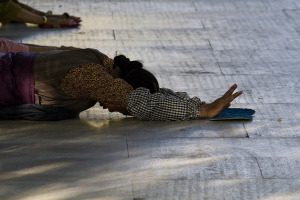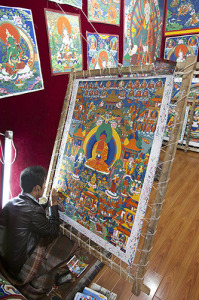
Throughout the world, men, women, and children show their devotion to the Buddha, Buddhist deities, and great teachers at altars in temples or in their homes. Worshippers and monks offer incense, flowers, food, or money to the Buddha or bodhisattva. They read sacred texts and chant sacred sounds, or mantras. Performing a pilgrimage to a sacred Buddhist site is also a form of devotion.
Untold numbers of Buddhist images have been produced for over 2,000 years. One reason for their creation is the Buddhist pursuit of spiritual merit. The perfection of dana, or giving, is a way to obtain merit and to affect one’s karma, the actions that influence one’s life in this world and the next.
By commissioning statues, paintings, scriptures, a stupa, or an altar, merit accrues to the donor, the artisan who creates the object, and those who in turn worship it. Donors are often mentioned by name, while the artists are often anonymous. In this exhibit, a Ming dynasty dharani manuscript bears the donor’s name and purpose: a prayer for his mother’s good health and peace.
A Buddhist image, text, or textile is created according to rules that govern works of art. Many treatises describe the proper measurements, expressions, and iconography. Each phase of creation is accompanied by rituals that confer a spiritual value to the work. A consecrated deposit, such as a crystal, small statue, or relic may be placed inside a statue. An example of this practice is the Sakyamuni Buddha image from Tibet, which contains a small statue. The ceremony of opening an image’s eyes, by painting or sculpting them, is the key element that concludes the ritual of creation and endows it with spiritual properties.
Perfect proportion and formal beauty are thought to enhance an image’s spiritual effectiveness.

Buddha Statue “Pra Buddha Suwan Ratana Roj”, Thailand, 2011 / Photo courtesy of Chavanee and Pavich Tongroach



